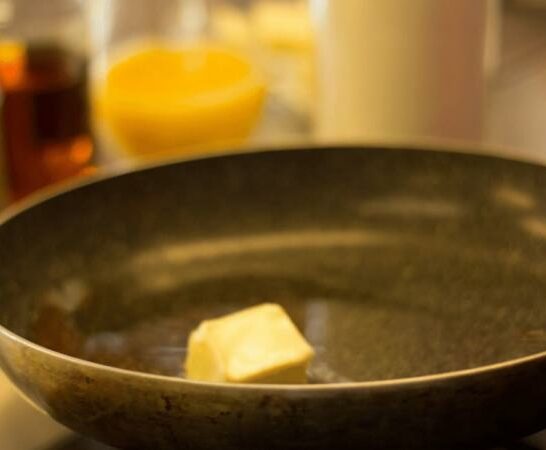Most folks know that conventional wisdom has us believing that fried foods are fundamentally unhealthy for us.
Frying with vegetable oil is supposedly a little better, but it’s hard to beat frying with butter for taste.
As usual, though, the tastiest option turns out to be reputedly the worst for our health.
Frying food in butter can cause problems due to its low smoke point, meaning that it can rapidly burn, causing the quality of the food to be highly diminished or even destroyed.
Medical professionals recommend that people reduce the number of fried food items they consume, particularly those fried in butter.
However, if you do choose to fry with butter, this article will give you a few pointers to help you keep your fried meals light and tasty.
How to fry with butter
Melt the butter on low-medium heat. Never use high heat when frying with butter. When the butter is about three-quarters melted, remove the pan from heat and stir the butter until it is completely melted. Place the fully melted butter back on the burner and add the food that is to be fried. It is critical to avoid high heat when frying with butter to not burn and smoke. Aim to brown the fried food without browning or outright burning the butter itself.
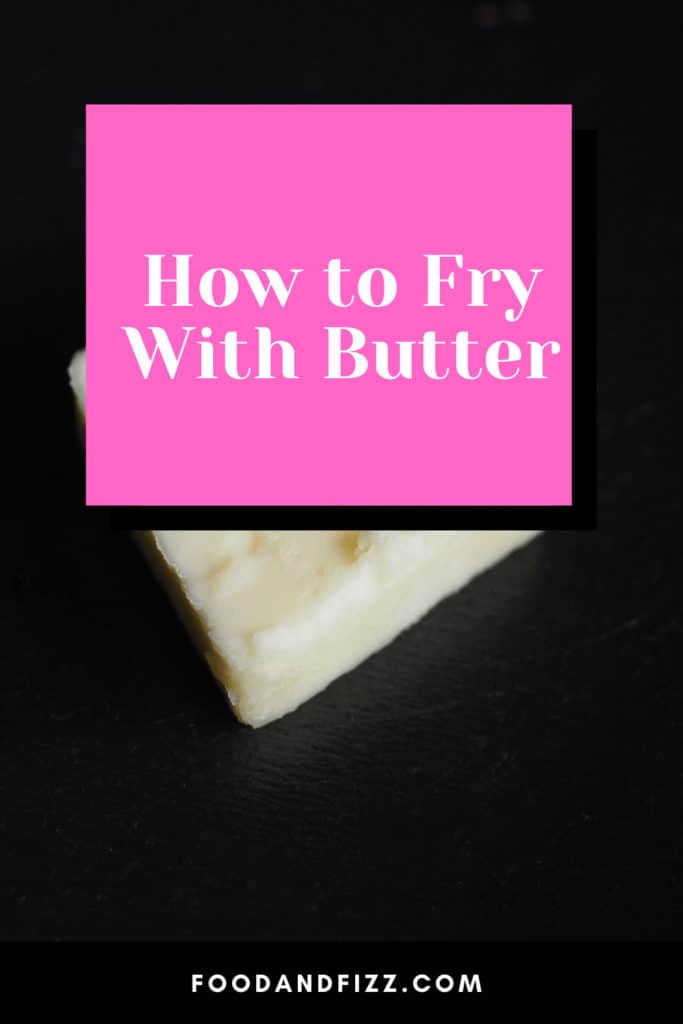
The difficulties of frying with butter–and how to overcome them
Many foods need to reach a specific temperature to fry correctly.
The trouble is, at those temperatures, butter tends to smoke, blacken, and transmogrify into a foul, bitter-tasting mess.
This sets the cook a pretty problem; how to fry with butter on low heat.
The answer is simple. It isn’t possible.
Too much butter, too hot a pan, too high a burner, any of these will leave the butter a hot, smoking, awful-tasting mess.
So, while brown butter is a good thing that enhances the flavor of many foods, the fine line between brown and black must be strictly observed and jealously guarded.
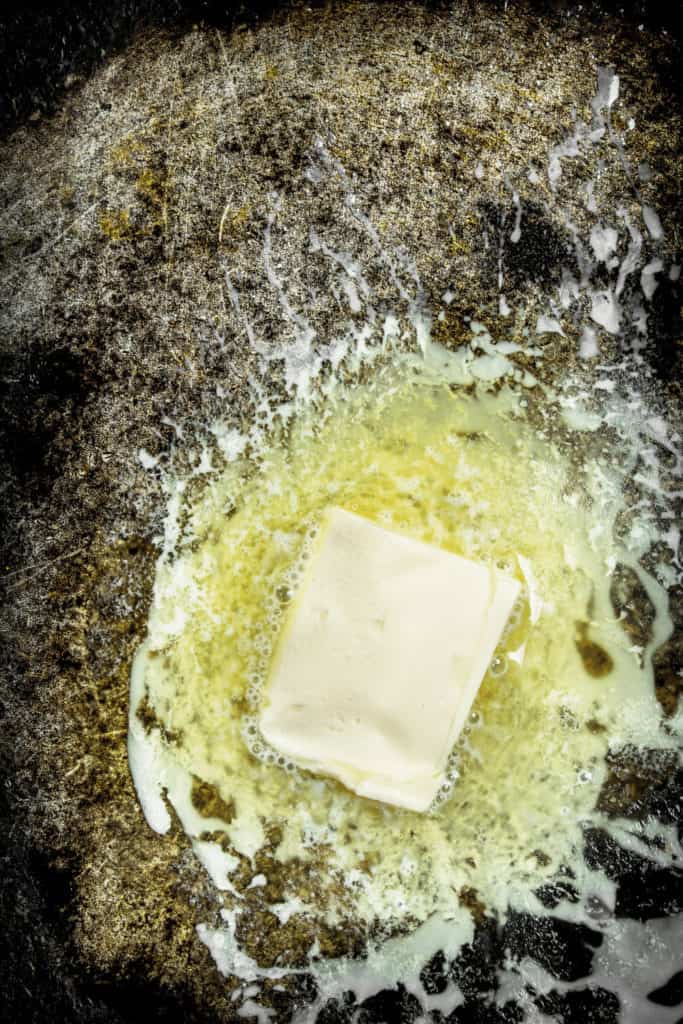
Overcoming the difficulties of frying with butter
High heat is the enemy of butter because the solids in butter’s buttermilk part are unfavorably prone to burning at hardly a moment’s notice.
To deal with this, maintain medium or low heat.
Sure, that makes actually ‘frying’ many foods impossible, so you must employ strategies like parboiling or air grilling the foods first, then using butter to simply brown them.
Use a high-quality frying pan.
The thicker the pan, the better for you because it will be easier to fry the butter without burning it as there is a larger buffer of material between the butter and the direct heat.
You should also use as little butter as you can possibly get away with.
This allows the food to take the brunt of the heat while still supplying the fats needed to bond to the food’s surface and deliver that tasty veneer.
Another technique to bring to the cooker is to keep stirring!
Use a wooden or non-metallic spatula to stir the contents of the frying pan as metal ones get hot and can make it worse for the butter.
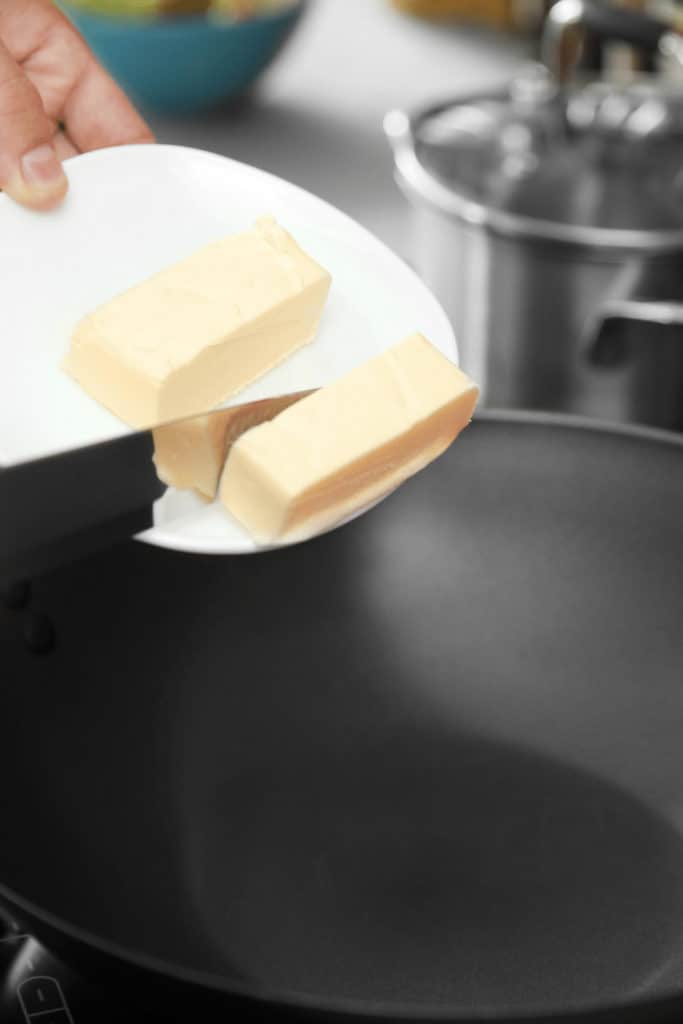
Fry with clarified butter
Frying with clarified butter is a splendid idea because clarified butter can withstand higher heat than its daintier counterpart.
Clarified butter is the milk fat in butterfat from which water and milk solids (sometimes called ‘milk salts’) are removed.
Clarified butter will keep for several weeks in a fridge as long as it is in an airtight container.
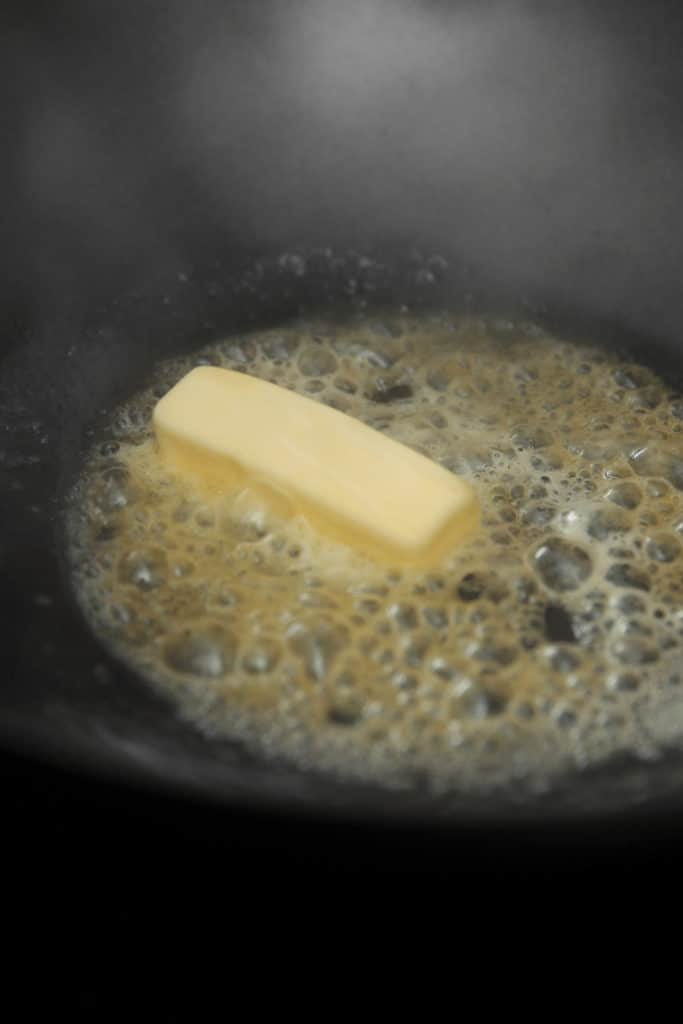
Make your own clarified butter
It is dead easy to make your own clarified butter to fry with, as demonstrated in the following steps.
- Over low heat, melt butter in a small, heavy-bottomed pan. Expect to lose about ¼ of the butter with which you begin the clarifying process. This is entirely normal.
- Slowly melting the butter allows the impurities and water to boil off and the milk solids to settle to the bottom. In a heavily bottomed frying pan and at low heat, these delicate solids ought to be well-protected against burning. (The milk solids are what make butter burn when frying, so by removing them, what you are doing is collecting the part of butter that has a higher smoke point and is, therefore, able to tolerate being used at higher temperatures.)
- Spoon off the foam once the butter is all melted and the foam has risen to the top. (This foam itself is edible and delicious, but many chefs throw it away, which is a pity.)
- Having spooned off all the foam, you will see a clear liquid atop the milky white solids at the bottom. Scoop out the clear (or clarified) butter, leaving the milk solids behind, and et voila, you’re done!
How to fry with clarified butter
This is as effortless as falling off a bicycle.
Use clarified butter to fry foods exactly the same way as with ordinary butter, tablespoon for tablespoon, except you are now free to exploit the higher temperatures that clarified butter can withstand.
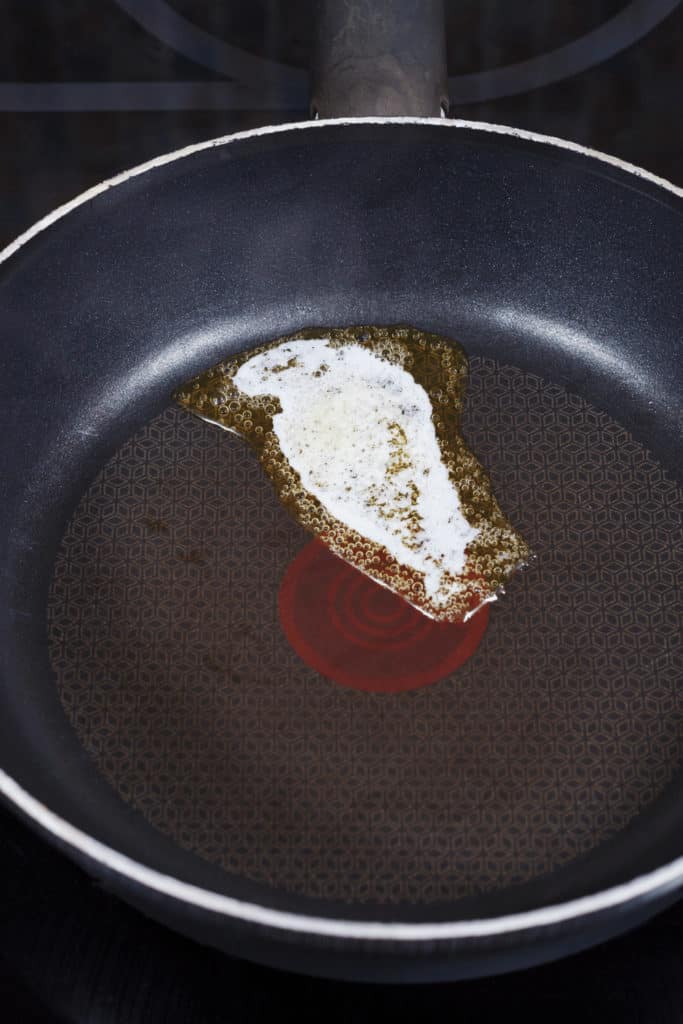
Different types of butter
There are different types of butter, and it is worth mindfully experimenting with them to see which butter literally suits your tastes best.
Salted butter–this is butter made the traditional way, by churning and salting pasteurized cream.
Probably explains why salted butter is also called ‘churned butter.’
Unsalted butter–is made just like salted butter, except without salt.
Not normally used for frying, but many chefs seem to prefer using unsalted butter for baking.
Light butter–this is made like churned butter, but with air and water added in.
The result is butter with less butterfat (about 25% less) than regular butter.
Chefs don’t usually use light butter for frying but instead offer it to diners as a spread.
Cultured butter–is made from cream that has been cultured with bacteria especially ‘harvested’ for that very purpose (sort of the way bacteria is added to cream to produce yogurt and probiotics).
Cultured butter has a unique, somewhat tangy taste. Other names for this butter are antique butter and old-fashioned butter.
Frequently Asked Question About How to fry with butter
What are the nutritional values of butter?
There are about 100 calories in each tablespoon of butter. With those calories, each tablespoon of butter has around 0.4 oz. of fat and about 0.25 oz. of saturated fat. You can get some idea of what those figures mean by comparing them to the same figures for vegetable oil, 120 calories per tablespoon, with about 0.5 oz. of fat but only 0.05 oz. of saturated fat. The take away, I think, is, the less butter or vegetable oil used, the better.
Is there any way to increase the heat butter will tolerate while frying?
Add some vegetable oil to the butter. The vegetable oil lends part of its heat resistance to the susceptible butterfat solids and makes the whole more tolerant of higher heat than just butter.
Afterword: How to fry with butter
Frying with butter is a subtle and difficult task requiring culinary dexterity because while browned butter is delicious, blackened butter is an unpalatable and acutely unwelcome addition to any food.
The paradox of maintaining a high heat to properly fry many foods with the necessity of keeping the heat low so as not to smoke or burn the butter is what makes frying with butter such an entertaining and challenging assignment.

